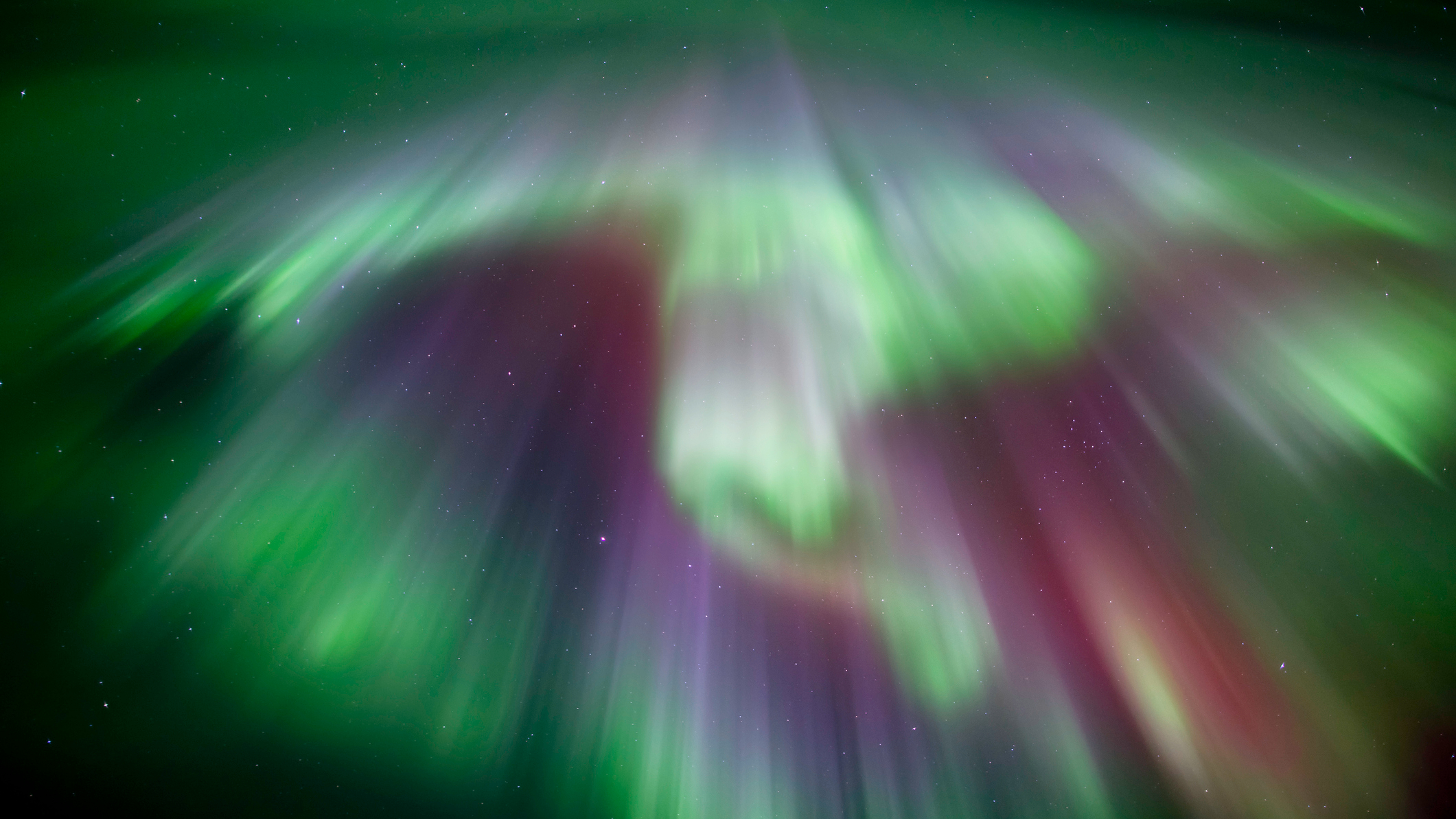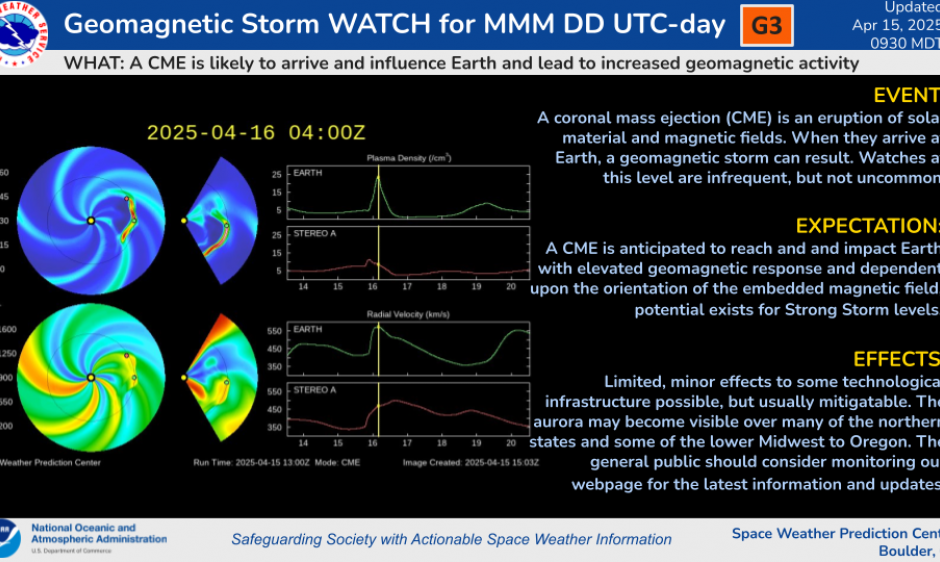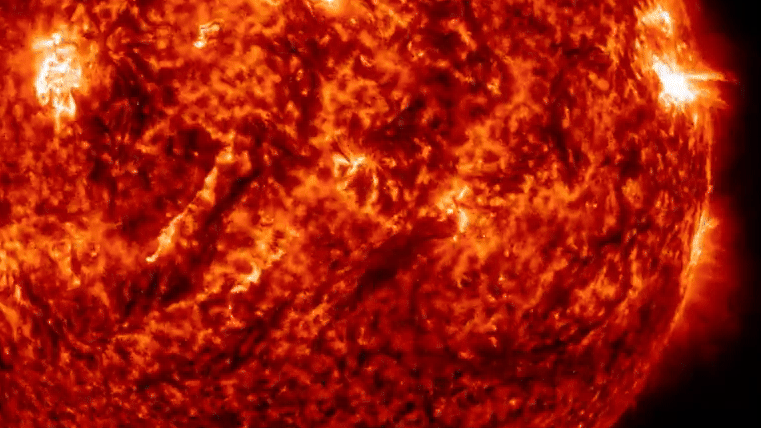
Aurora chasers, get ready! The National Oceanic and Atmospheric Administration's (NOAA) Space Weather Prediction Center (SWPC) has issued a geomagnetic storm warning due to an incoming one-two punch from the sun, and we have possibly received the first blow.
The predicted G3-level storm conditions could bring northern lights as far south as Illinois and Oregon (typically 50° geomagnetic latitude) tonight.
The incoming "punch" from the sun is expected to arrive in the form of two coronal mass ejections (CMEs) that are expected to strike Earth in succession. The CMEs were launched during a rare double eruption of solar magnetic filaments on April 12 and April 13. Arriving hours earlier than expected, a CME struck Earth's magnetic field at 1 p.m. ET (1700 GMT) on April 15, according to Spaceweather.com.
A strong (G3) geomagnetic storm watch remains in place for today (April 16) as conditions could intensify again, particularly if another CME arrives. According to the NOAA Space Weather Prediction Center, the Kp index is expected to peak at 5.33 over the next 24 hours. For the latest forecast and timing details, check out NOAA's 3-day outlook.
NOAA classifies geomagnetic storms using a G-scale, which ranks their intensity from G1 (minor) to G5 (extreme). The recent geomagnetic storm watch NOAA issued is rated a G3, indicating "strong" storm conditions. "Watches at this level are infrequent, but not uncommon," NOAA SWPC wrote in the geomagnetic storm watch statement.

CMEs are large expulsions of plasma and magnetic field from the sun; when they collide with Earth's magnetic field, they can cause geomagnetic storms that trigger brilliant auroras, sometimes visible much farther south than usual. With this event, auroras may be visible as far south as Oregon and Illinois, making it a must-watch for northern lights enthusiasts. The effects of the solar punch are expected to be felt through April 17, with heightened geomagnetic activity predicted over the next few days.

The timing of the CME impacts can vary, so it’s important to stay updated on space weather alerts that provide real-time forecasts based on your location. A great option is "My Aurora Forecast & Alerts" (available for iOS and Android). For a deeper dive into space weather conditions, "Space Weather Live" is another excellent choice (available for iOS and Android)
You can keep up to date with the latest aurora forecasts and geomagnetic storm warnings with our northern lights alert live blog.
Editor's note: This story was updated at 3 p.m. EST (1900 GMT) to include details of the initial CME impact that arrived earlier than previously predicted and again at 6:45 a.m. ET (1045 GMT ) on April 16 to include information about the G3 storm watch remaining in place for today (April 16).







